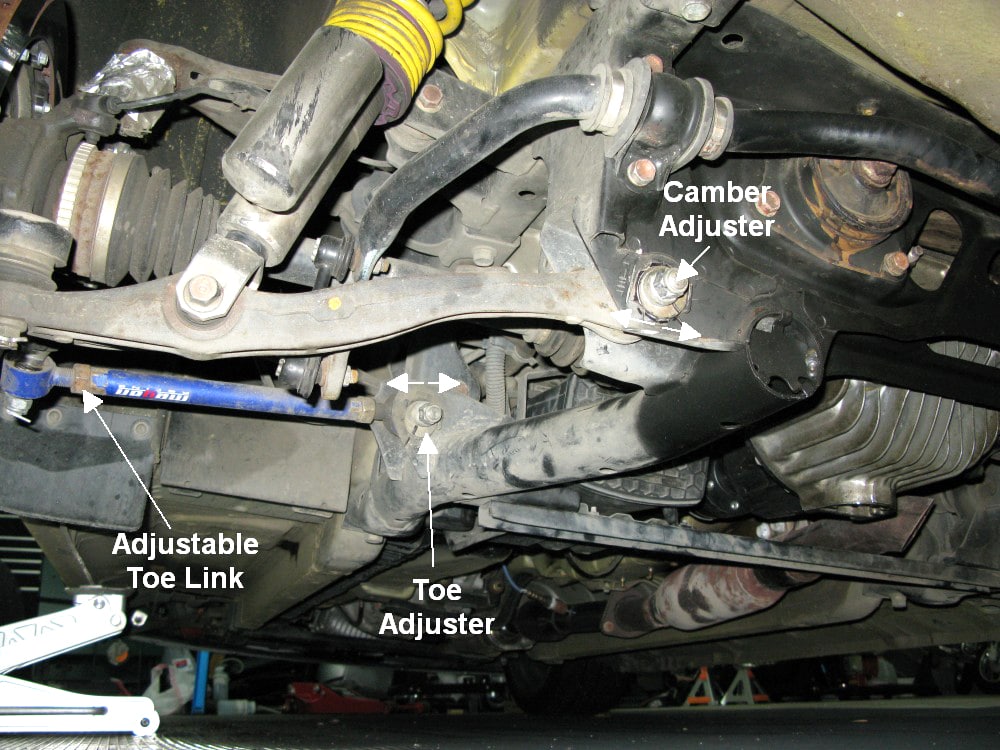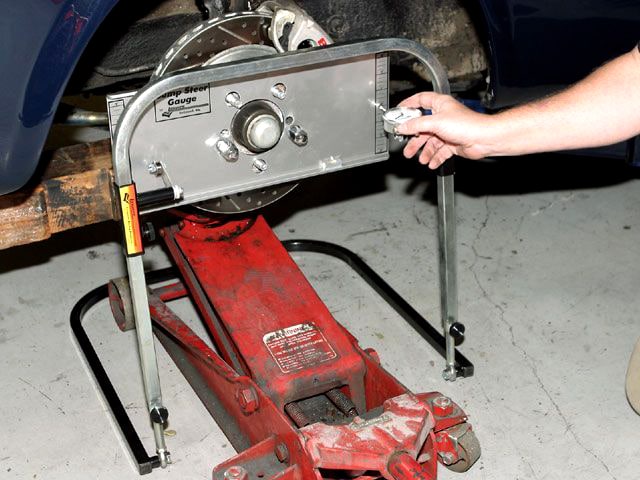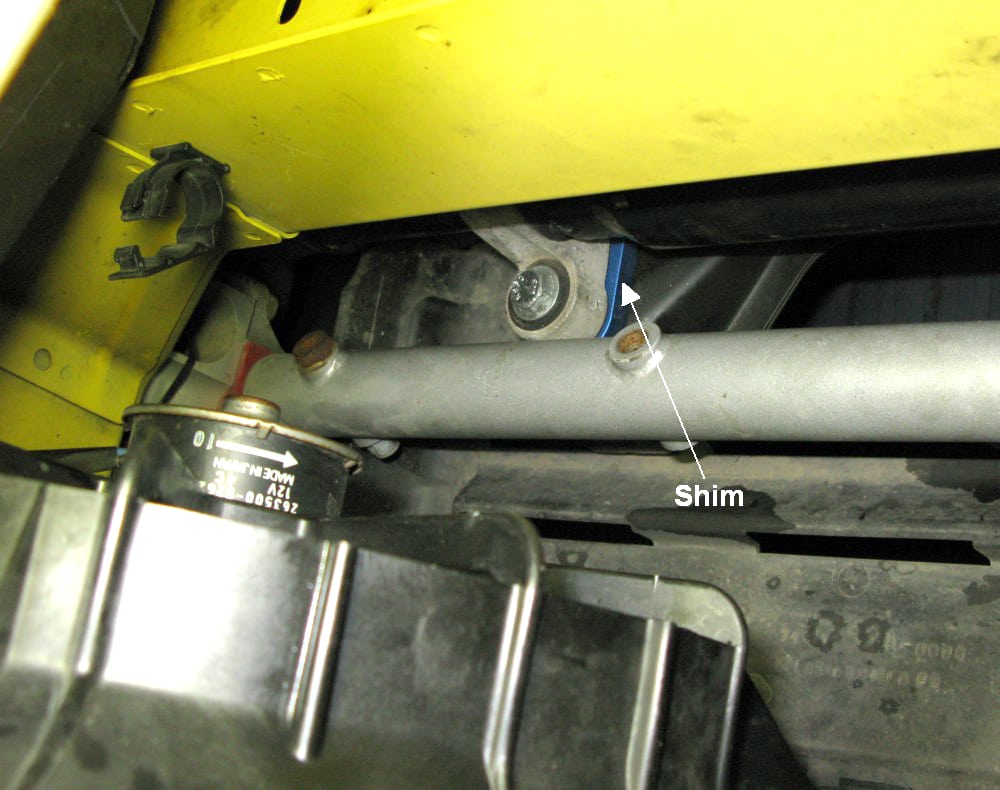When you’re at the track, the importance of being able to position your car accurately cannot be overstated. Each split second counts and the last thing you want is your car steering spontaneously when going through bumpy corners. This effect is called bump steer.
The automotive steering system is an engineering marvel. So much of what keeps your car going in the right direction is hidden away under a blanket of complex machinery.
But despite the impressive engineering, it’s not perfect. Even the fastest cars with the best suspension systems in the world can be plagued with bump steer.
Even though it can be corrected, eliminating bump steer is next to impossible. In this guide, we’ll explore this phenomenon, understand what causes it, and we’ll look at how to correct it.
Bump Steer Explained
Bump steer is a common and unavoidable problem. It is a result of misalignment in the steering system which causes the wheels to steer automatically when going over a bump — without any input from the driver.
In other words, it makes your steering twichy and unpredictable. Let’s try to understand why this happens. For the sake of simplicity, we’ll explain this in the context of a double-wishbone + rack and pinion setup.
To better understand this concept, it’ll help to have a good grasp of the following:
- Wheel toe angles — we’ve explained this in our suspension geometry guide.
- Instant center — as seen in our guide to suspension roll center.
- The function of tie rods and control arms.

The upper and lower control arms along with the tie rods at each end are the main components that can cause bump steer. In case you weren’t aware of what these components do, here’s a quick explanation:
- Control Arms: Connect the wheels to the chassis (makes the wheels move up and down).
- Tie Rods: Connect the wheels to the steering rack (makes the wheels turn side to side).
Let’s take a look at what actually happens when you’re experiencing it. Visualize your car from the front view and picture three imaginary lines going through:
- Both upper and lower control arms (one each), and
- the tie rod.
Let’s label each of these lines:
- U = Upper Control Arm
- T = Tie Rod
- L = Lower Control Arm
The point where U and L intersect is called the instantaneous center — this is the point about which your suspension linkages will rotate. If T does not intersect with the instantaneous center, there will be bump steer.

Now, let’s look at what exactly happens when you drive over bumps:
- Upper control arms, lower control arms, and tie rod — all three will experience the same amount of vertical displacement. In other words, they’ll all move up at an equal distance.
- When the three components move up and down, they travel around an arc (because they pivot around a fixed point).
- The problem arises because the tie rod is shorter than the control arms. Remember, the tie rod is what makes the wheel steer.
- Because the tire rod is shorter in length and because it doesn’t rotate about the IC point, it travels in a different arc. This introduces horizontal displacement within the tie rod and causes unwanted steering.
Causes
Bump steer is caused when the tie rod’s hypothetical inward extension (imaginary line) doesn’t intersect with the instantaneous center (IC) formed by the upper and lower wishbones.
The IC is a reference point that helps us to calculate the correct layout for minimal bump steer. Generally, from the factory, this phenomenon is extremely limited and well managed.
It mostly occurs in lowered cars or in those fitted with aftermarket control arms or camber kits. In short, any modifications that reposition the 3 main linkages (tie rod, upper, and lower wishbone) from intersecting at the IC cause bump steer.
This can cause toe-in or toe-out depending upon the placement of the steering rack. If it is placed behind the spindle it will cause the tire to toe-out on bumps.
And if the rack is positioned ahead of the spindle, it causes a toe-in. So, the main culprit if you ever feel of a twichy steering wheel could most likely be the tie rods.
Adjusting your camber angle can also cause steering bumps as it causes the rotational axis of the spindle to change. This disrupts the arc in which the tie rods travel.
So, any type of uncalculated modifications done to the steering geometry can cause it.
Correction

It can be minimized by using a tie-rod of appropriate length. The tie rod should be of a length that falls along with an imaginary line passing through the two ball joints and control-arm pivot points.
This gives it enough flexing area to curve up the same arc as the wishbones. The tie-rod should also be checked to intersect with the Instantaneous Center formed by the upper and lower arms.
With that in mind, adjusting the tie-rod length and angle; along with the suspension arm length can help correct and minimize a disrupted front suspension geometry; minimizing bump steer as a result.
But before you can do any of that, you need to measure your bump steer with purpose-built gauges and tools.
Measurement

Before you measure bump steer, you need to ensure that your car is completely set up for driving or racing conditions. All components must be torqued down and in proper working order.
Next, you’re going to need a good bump steer gauge. The Longacre 52-79005 Precision Gauge is a very sought-after option preferred by many enthusiasts and racers alike. But you can do this using several types of equipment.
What these tools do is tell you whether your wheels steer or not when they experience a bump or dip.
If you’re wondering how to measure and fix bump steer, here are some steps you should follow:
- Jack up your car using a combination of floor jacks and jack stands.
- Take the wheels off.
- Set your suspension at normal ride height.
- Ensure your caster, camber, and toe-in are set up correctly.
- Ensure that your outer tie rod length is set correctly.
- Center your steering and make sure it is locked.
- Measure the distance between the ground (assuming you’re on a level surface) and the lower ball joint. Note the measurement down.
- Remove the springs and sway bar.
- Bring your suspension back to proper height using the measurement that you took down.
- Bolt-on your gauge to the hub. Level the gauge and keep an eye on where the dial indicator so that you can revert to the correct ride height.
- Jack the suspension through up to 3” of rebound and compression. Monitor and note your results.
- Use a correction kit or shims to make the right adjustment depending on your set-up.

Bump Steer Kits
These kits are designed to change the angle of the tie rods to align them such that they intersect the IC point. These kits come in handy for cars that are either lifted or lowered and easily help to align the tie-rod along the instant center. All this is done by replacing the standard tie-rods with adjustable ones.
The tie-rod-ends included in these kits can be adjusted extensively to provide maximum leverage. A generic kit contains:
- End links,
- tapered shafts,
- longer nuts,
- washers, and
- bushing spacers.

Correction for Lowered Cars
The suspension geometry of your car is perfected from the factory, and so it is always recommended to not alter it unless you implement the right fixes afterward.
This is because components like the suspension linkages, tie-rods, wheel hub, and knuckle are all angled and engineered to work in harmony.
Lowering the ride height of a car is the easiest way to disrupt this harmony. But it’s not too difficult to fix, thanks to the adjustability offered by correction kits.
Lowering a car pushes the tie rod angle upwards from the IC which causes bump steer. Getting a correction kit installed by an experienced mechanic is the way to go and you will be back to a sharper and better handling car.
You’re All Set
A thumb rule to follow after installing a correction kit is to check the alignment and toe angle. The goal is to make sure your car steers as predictably as possible and your tires don’t wear out unevenly.
Bump steer rarely occurs in unmodified suspension setups of cars. So, the next time you plan on either lowering, raising, or improving the handling characteristics, make sure to check your suspension angles for unwanted changes.
When was the last time you had your car’s bump steer corrected? Let us know by leaving a comment below!